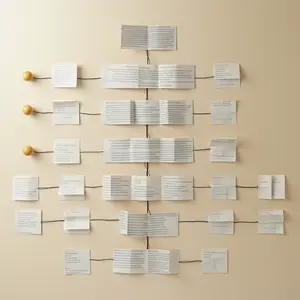How to Avoid Probate: Smart Estate Planning Strategies
Estate planning is more than just drafting a will—it’s about ensuring a smooth and efficient transfer of assets to your loved ones while minimizing legal hassles. Probate, the court-supervised process of distributing assets after death, can be time-consuming, expensive, and public. Fortunately, many assets can bypass probate, allowing beneficiaries to receive their inheritance quickly and privately.
This guide will explore key strategies to avoid probate, real-life examples of how proper planning helps, and potential risks to watch for.

Why Avoid Probate?
Avoiding probate can:
- Save Tede – Probate can take months or even years, delaying asset access.
- Reduce Costs – Legal fees, court costs, and executor fees can erode an estate’s value.
- Maintain Privacy – Probate proceedings are public records that expose financial details.
- Prevent Family Disputes – A clear, probate-free estate plan reduces conflict among heirs.
However, not all assets must go through probate. By structuring your estate strategically, you can ensure a fast, cost-effective transfer of wealth. It’s important to be aware of potential risks and plan accordingly.
Assets That Bypass Probate
Certain assets automatically avoid probate because they have built-in mechanisms for passing ownership. These include:
- Jointly Owned Property – Assets titled as joint tenants with right of survivorship transfer immediately to the co-owner.
- Payable-on-Death (POD) Accounts – Bank accounts that allow named beneficiaries to inherit funds without probate.
- Transfer-on-Death (TOD) Deeds – Allows real estate to pass directly to a designated beneficiary.
- Living Trusts – Assets placed in a revocable trust avoid probate and pass privately to heirs.
- Life Insurance Proceeds – Paid directly to the named beneficiary outside of probate.
- Risks to Watch For
- Outdated Beneficiaries – Failing to update beneficiaries on accounts can lead to unintended heirs receiving assets.
- Joint Tenancy Risks – Can unintentionally disinherit other family members or expose assets to the co-owner’s debts.
- Mismanaged Trusts – Poorly structured trusts may lead to tax issues or disputes.
- Real-Life Examples: When Estate Planning Helps & When It Fails
- Success Story: Smart Planning with a Living Trust
Sarah created a revocable living trust, transferring her home, investment accounts, and valuables into it. When she passed away, her assets were distributed efficiently to her beneficiaries without probate.
- Failure: No Beneficiary on a Bank Account
Tom had a large savings account but never named a payable-on-death (POD) beneficiary. As a result, the account was tied up in probate for over a year, preventing his family from accessing much-needed funds.
- Success Story: TOD Deed Saves the Family Home
Michael used a Transfer-on-Death (TOD) deed for his vacation home, ensuring it passed directly to his son. There was no probate, and there was no legal hassle.
- Failure: Joint Ownership Gone Wrong
Mark added his son as a joint owner of his home, intending for him to inherit it. However, when Mark needed to sell the house for medical expenses, his son refused to sign off, creating legal complications and financial hardship.
- Key Strategies to Avoid Probate
Here’s how to structure your estate plan effectively:
- Use Joint Tenancy (With Caution)
- Best for spouses or trusted co-owners (real estate, vehicles, bank accounts).
- Potential Risk: The surviving co-owner has full control, which could disinherit other heirs.
- Name Beneficiaries on Accounts
- Set up Payable-on-Death (POD) accounts for checking & savings.
- Use Transfer-on-Death (TOD) registrations for stocks, bonds, & real estate.
- Potential Risk: Failing to update beneficiaries can result in ex-spouses or deceased individuals inheriting assets.
- Establish a Living Trust
- Place real estate, investments, and valuable assets in a revocable trust.
- Retain control during your lifetime and ensure seamless transfers after death.
- Potential Risk: A poorly managed trust can lead to unexpected tax liabilities.
- Keep Life Insurance Beneficiaries Updated
- Life insurance proceeds pass directly to the named beneficiaries.
- Potential Risk: Failing to update beneficiaries can cause probate delays.
- Use a TOD Deed for Real Estate
- Allows fast and easy property transfers without probate.
- Potential Risk: Not all states recognize TOD deeds. Check with an estate planning attorney.
- Why Work With an Estate Planning Attorney?
Even with these strategies, mistakes can be costly. An estate planning attorney can help:
- Ensure documents comply with state laws
- Avoid unintended consequences (tax issues, disputes, outdated beneficiaries)
- Tailor strategies to your specific situation
If you live in San Diego and need expert guidance, Ted Cook, Attorney at Law, can help you create a customized estate plan that keeps your assets out of probate.
Final Thoughts: Protecting Your Legacy
Avoiding probate isn’t just about saving time and money—it’s about ensuring your loved ones receive their inheritance without unnecessary stress or legal battles.
- You can create a seamless estate plan by using tools like living trusts, POD/TOD accounts, joint ownership, and updated beneficiary designations.
- Working with an experienced estate planning attorney ensures your wishes are honored, and your assets are protected.
- Failing to plan properly can lead to probate delays, legal disputes, and financial hardship for your heirs.
- Take Action Today!
🔹 Schedule a consultation with probate attorney Ted Cook in Point Loma, San Diego, to create an estate plan that protects your family’s future.
